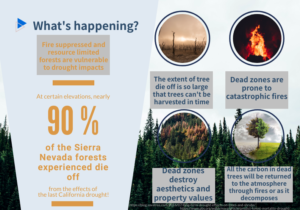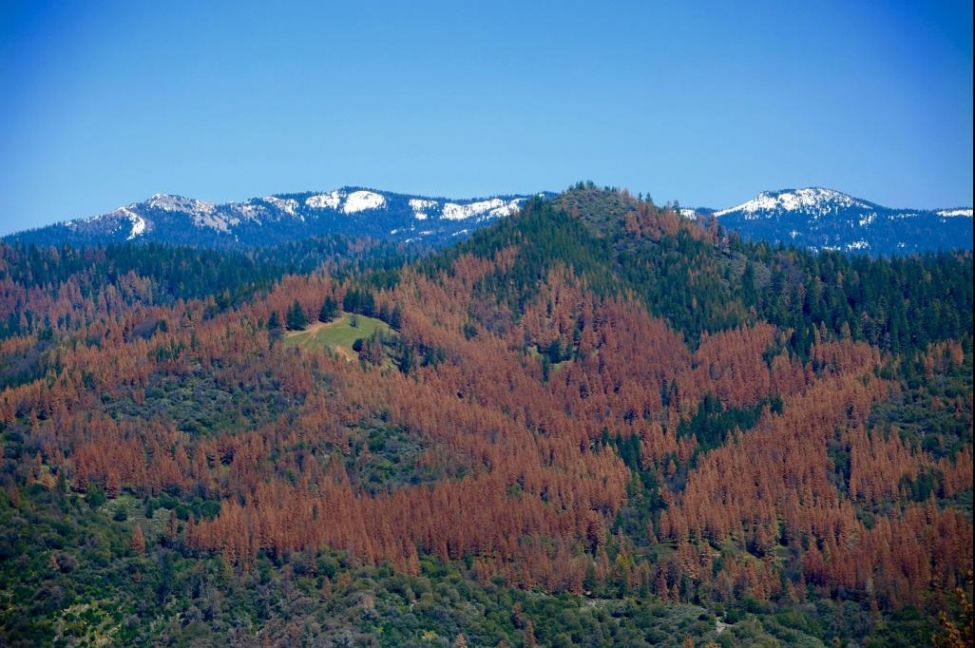By Nicolette Balmaceda, UC Merced, CECS Summer 2020 Intern
Our forests are critical to the state of California. They provide habitats and aesthetics that help our society and economy function, the air we breathe, timber to build shelter, and more. Trees can also decrease the amount of carbon in the atmosphere by absorbing it and storing it as wood, mitigating greenhouse gas emissions and climate change.
The impacts of climate change and drought have increased the rate of tree die off in California forests. The last mega-drought in California caused catastrophic forest die-off: certain elevations experienced nearly 90% mortality1. The root cause of this alarming level of tree die off is fire suppression2. Without frequent low intensity fires, forests have become too dense, and combined with drought, there are not enough resources to support the number of trees.
When trees begin to die off, carbon is eventually lost back into the atmosphere, contributing to driving further climate change and creating a cycle of longer and more intense drought periods that lead to even more tree die-off. The combination of more intense drought with other impacts of climate change enhances the hot and dry conditions within forests that make them susceptible to severe and catastrophic fires. Die-off also decreases the value of the timber a forest produces; since so many trees die at one time, they cannot be harvested quickly enough before their quality degrades. The natural beauty and habitats of forest landscapes are also impacted by tree die-off since trees support many of the aesthetics and recreation that attract tourists and support local economies3.

We need to protect our forests from widespread tree die off to preserve our forest habitats, their natural beauty, and the ecosystem services they provide. Management interventions are needed such as forest thinning, prescribed fires, and monitoring4. Forest thinning and prescribed fires would reduce the amount of trees in forests resulting in less competition for water and healthier trees. Monitoring is needed since forests are continually changing at different rates at ranging across different locations.
Many acres of California forests are at risk, which makes the problem challenging and more urgent. We need to identify where high risk locations are so that treatments can be strategically allocated. Developing tools to track and monitor which areas are most likely to be affected by mega drought is an important goal for the Center for Ecosystem Climate Solutions. These tools will provide a sense of which management options should be implemented and where they should be used. Tree die-off is only one of many effects of climate change and more will accumulate, so we need to continue our efforts and adapt to the impacts.
Sources:
1 https://news.berkeley.edu/2018/01/18/sierra-wildfire-risk/
2 https://www.climatehubs.usda.gov/sites/default/files/DroughtFactSheet_R5_2017_1212_508.pdf
3 https://www.fs.fed.us/psw/topics/tree_mortality/california/
4 https://www.fs.fed.us/psw/publications/fettig/psw_2019_fettig002.pdf
This content was developed as part of the CECS Summer 2020 Science Communication Internship.

